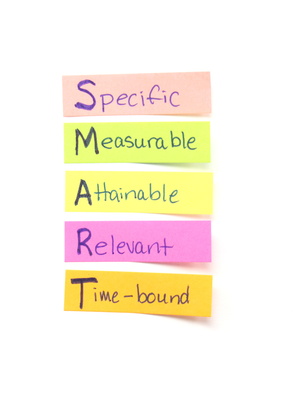Making goals stick…well before worrying about how to make them stick, step one is to pick a goal, or a set of goals, and make them “SMART” – I mentioned this in my last blog, so let’s get in to an example of this!
SMART Goal setting Case Study 1:
Joanna, a 38 year old, currently inactive graphic designer, initially came to us with the goal of “getting more fit and staying healthy” which upon further investigation, meant “be able to run 10k.”
Using the acronym SMART for goal setting, this is how we set it up for Joanna:
Specific – learn to run 10k
Measurable – distance: 10k
Action items – Register for a 10k running clinic. Contact friends that are (a) runners (b) other newbies that want to learn (c) set up running schedule in the week for 13 weeks
Realistic – is this goal realistic? Yes!
Timeline – 13 weeks
Looks simple, right? Right! My favourite principle, KISS! (Keep it simple, silly!)
Each of the above elements need to consider (a) what is important to you, (b) what’s going on in your world and (c) your personality. For example, if Joanna had told me that she wanted to run 10k (as a complete beginner) in one month, I may have said that her TIMELINE was not REALISTIC and therefore needs adjustment.
If Joanna had said that she just wanted to learn to run, ANY distance (“oh, I don’t know, 5k…20k…what do you think?”) and didn’t care when she achieved it, it would be important for us to review the pros and cons of different distances, which would determine an appropriate timeline. Finally, I’d suggested finding an event that puts a deadline on achieving the goal and gives her something to celebrate and be proud of on the day of!








